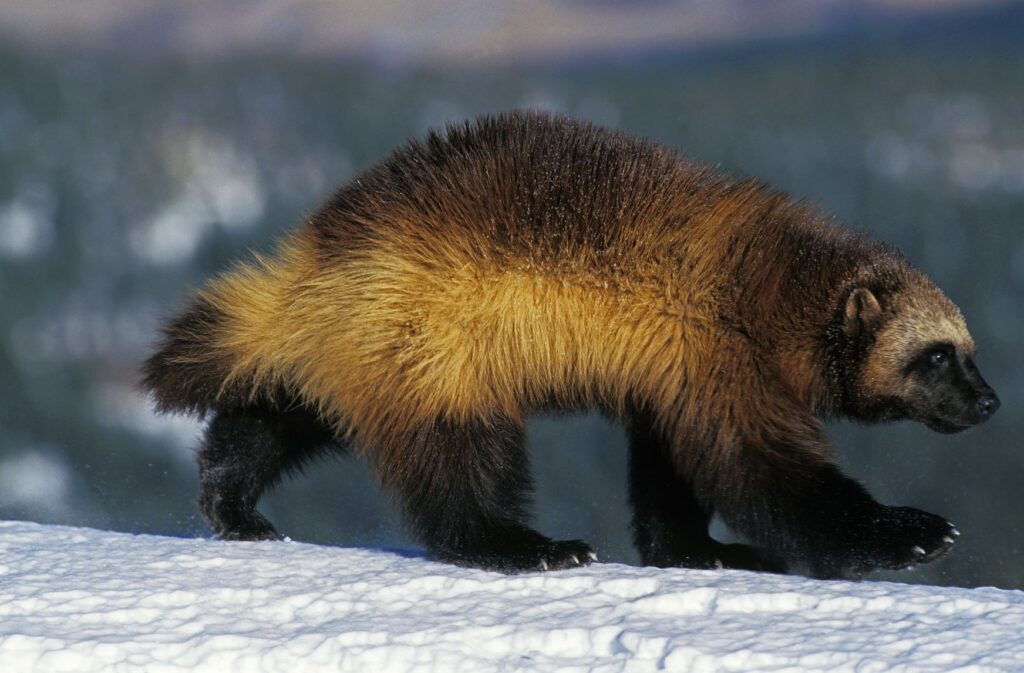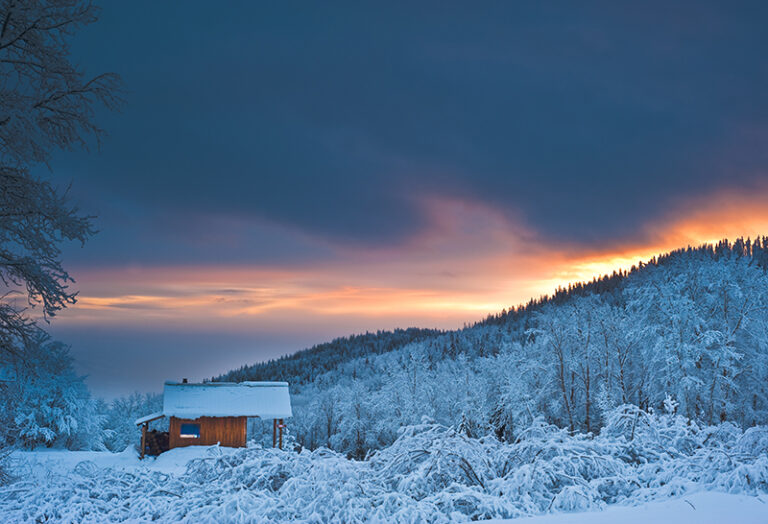Gulo gulo, the gluttonous one. Wolverines are one the feistiest and most elusive carnivores in the north. Even among fierce predators of the Mustelidae or weasel family, wolverines are above and beyond. They have been known to fend off a grizzly bear from a kill and, when opportunity arises, hunt animals many times their size—like deer.
They are the largest member of the Mustelidae family, which include other tenacious hunters including badgers, martens, and ermines. They weight 18-44 pounds with round ears and distinctive face markings. Like many mustelids they are long bodied with bushy tails and large clawed feet that are useful for taking down prey and traveling through deep snow.
There are fewer than 300 wolverines in the contiguous U.S. and around 50 in Washington, so it is a truly unique experience to view one in the wild. They once roamed the high peaks as far south as the Rockies in New Mexico and the Sierras in California. Their population and range have been reduced significantly after more than a century of trapping and habitat loss. They now only exist in small isolated pockets of Idaho, Montana, Washington, Wyoming and northeastern Oregon, which greatly limits their ability to find mates and increase their genetic diversity.
Wolverines are particularly linked to snowy places. Pregnant females den in deep snow that must persist until late spring in order to rear their kits. They also store their meat in the snowy refrigerator of the summer snowpack to retrieve when there is less game.

Due to the rugged landscape and this species’ elusive, solitary nature, it is difficult to catch site of a wolverine, but the increasing use of game cameras has greatly helped. The non-profit conservation advocacy organization Conservation Northwest and its team of citizen scientists deploy cameras to get a glimpse of these creatures int the wild. And just this August researchers from the Cascade Carnivore Project working with the National Park Service documented a female named “Jori” and her two kits roaming the slopes of Mount Rainer, the first-time wolverines have been in the area in 100 years.
Wolverines can range far looking for prey and mates and have huge home ranges. In the Yellowstone area females have traveled over 150 miles and males over 500. Some can roam over 18 miles in one night. Their ability to travel have helped them to make recent appearances in California, as well as a sighting this May on the southernmost coast of Washington. Over Memorial Day weekend there where two confirmed sightings of a wolverine near Surfside and Naselle. Even these mountain dwelling creatures might need to take a trip to the beach to find a mate.
Originally published as “The Elusive Gulo Gulo” in the Nov.-Dec. 2020 double issue.
Adam Gebauer has yet to see a wolverine, but he is keeping his eyes out on his backcountry ski adventures and won’t try to steal its meal. He wrote about efforts to protect both cougars and livestock in the Sept.-Oct. 2020 issue.













